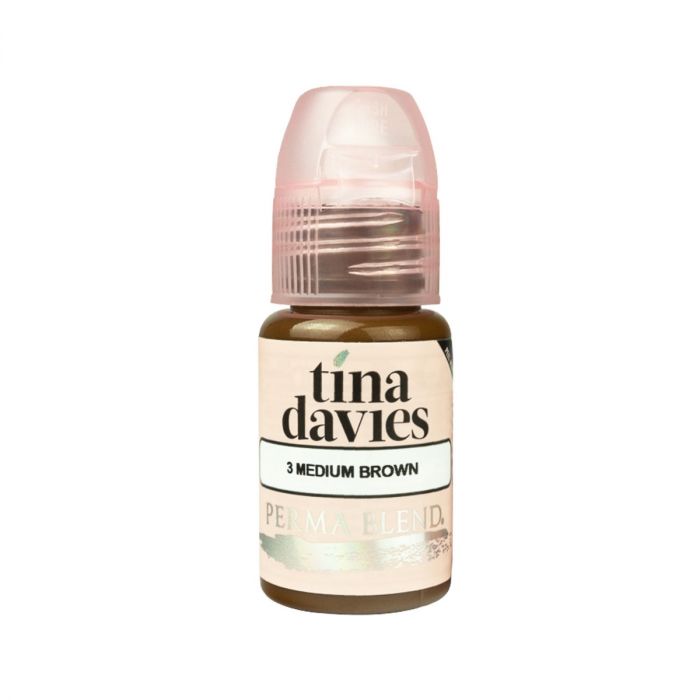Article: Why Do Inorganic PMU Pigments Fade From The Skin?
Why Do Inorganic PMU Pigments Fade From The Skin?
VIDEO FROM BOGDAN (EN-SUBTITLES
Bogdan, in his 2-minute video, shows with arrows on the model what processes occur in the body associated with the so-called “fading” of tattoo pigments:
METABOLIC INFLUENCE
Inorganic pigments are metabolized by the body faster than organic ones — that's your fade factor.
The whole process, known as "pigment fallout," is linked to redox reactions in the human body.
Putting it simply, and in the case of permanents — a protein (not the egg kind), called transferrin, grabs pigment particles and tries to partly shove them into the bloodstream and partly kick them out of the body naturally.
INORGANIC PIGMENTS ARE IRON
Since inorganic pigments, i.e., iron, are a biogenic material (chemical elements necessary for normal bodily functions), they participate in these processes. Here's what happens:
- Pigment is injected under the skin
- Redox reactions start immediately, and the rate of biochemical reactions is very high, but since a considerable chunk of pigment is injected, the fading process happens gradually
- The pigment essentially becomes a soluble salt (not kitchen or sea salt)
- Some pigments are transformed by transferrin through the red bone marrow, generating erythrocytes. Simply put — they enter the bloodstream
- Another part of the pigments, now as soluble salts, pass through our already tortured filters — the liver and spleen
- Then, as usual, the pigments go for natural disposal through the intestines and kidneys. You get the idea. Don’t worry, you won’t see anything colourful under you in the restroom.
The whole process takes about a year to a year and a half. Sometimes more, sometimes less. As we’ve long understood, it all depends on the individual person and the stable/unstable function of their body.
Part 2
VIDEO FROM BOGDAN (EN-SUBTITLES)
Bogdan shows on the board macrophages and other fascinating processes that occur during the removal of pigments:
WHAT ABOUT MACROPHAGES?
Вы You might say:
"What about macrophages? We’ve been told about them by smart permanent makeup artists on the internet."
Answer:
Macrophages don’t touch iron oxide pigments. Again, because it’s biogenic material. Only transferrin deals with them.
Macrophages are all about organics.
Macrophages eat everything that isn’t nailed down and hinders the body. During inflammation, their numbers increase.
When we started making tattoo ink, we wondered — a tattoo on the body doesn't just disappear over time.
Yes, it changes color slightly over decades, and in areas of tight clothing contact, it may even be lighter due to constant friction. So, macrophages don't touch pigment particles?
But eyebrows do fade? Turns out, they do.
THE SPEED OF BLOOD AND LYMPH
One thing—the speed of blood and lymph flow at the site where pigments are injected.
For example, the number of capillaries and vessels per square meter of facial skin (eyebrows, eyes, lips area) and per square meter of back or shoulders is significantly different. And of course, there's much more of that on the face.
If fluid is constantly replaced at the pigment injection site, any organic pigment (even though we remember that pigment is a solid and insoluble substance) will slowly dissolve and be excreted by the body.
The organically tattooed areas on the face will lighten. Due to blood flow, lymph flow, and somewhat due to macrophages, when the pigment is dissolved enough for them.
An undissolved pigment won't be eaten by macrophages; it’s physically impossible.
Organic pigments break down because they dissolve, and they dissolve because they break down. Such is the paradox. It all depends on the chemical and crystalline structure of the specific pigment.
And since manufacturers (the Chinese) of the pigment itself (dry, not the ink) care about its stability, we won’t see any shift towards soluble pigments.
You remember that no one makes special pigments for permanents and tattoos, right?
We just use suitable pigments for making inks.
Part 3
VIDEO FROM BOGDAN (EN SUBTITLES)
Bogdan describes titanium dioxide in PMU pigments:
REGARDING THE METABOLISM OF CARBON BLACK AND TITANIUM DIOXIDE
There are some peculiarities.
Titanium dioxide particles cannot be dissolved by anything or anyone. Even if a titanium dioxide particle is placed inside a cell, it will not dissolve and will just hang out in that cell. Titanium dioxide is not degraded by bodily fluids.
Therefore, macrophages can’t handle it. It's like trying to eat a brick.
Transferrin isn’t interested in this component either, as titanium dioxide is not a biogenic material.
And white pigment can't be removed with a laser either.
So, this component is with you for life.
And anyone who says their inks contain a special type of titanium dioxide that eventually metabolizes is lying.
As for carbon black, it has its quirks:
In its pure form, carbon is little attractive to the body. To become biogenic and of interest to transferrin, carbon needs to undergo oxidation reactions, which can’t be carried out in the body. Therefore, transferrin will not excrete this pigment.
But with macrophages, it’s a similar story as with organic pigments.
In areas of constant fluid replacement (typically on the face), soot particles will be destroyed and eaten by macrophages. Thus, permanent makeup on eyebrows gradually and evenly lightens (assuming the brown mix is properly made and the work is done at the right depth).
On other parts of the body, black tattoos will look quite black, and soot particles will remain in place.
And with a laser, this stuff is very easily destroyed.










Laisser un commentaire
Ce site est protégé par hCaptcha, et la Politique de confidentialité et les Conditions de service de hCaptcha s’appliquent.